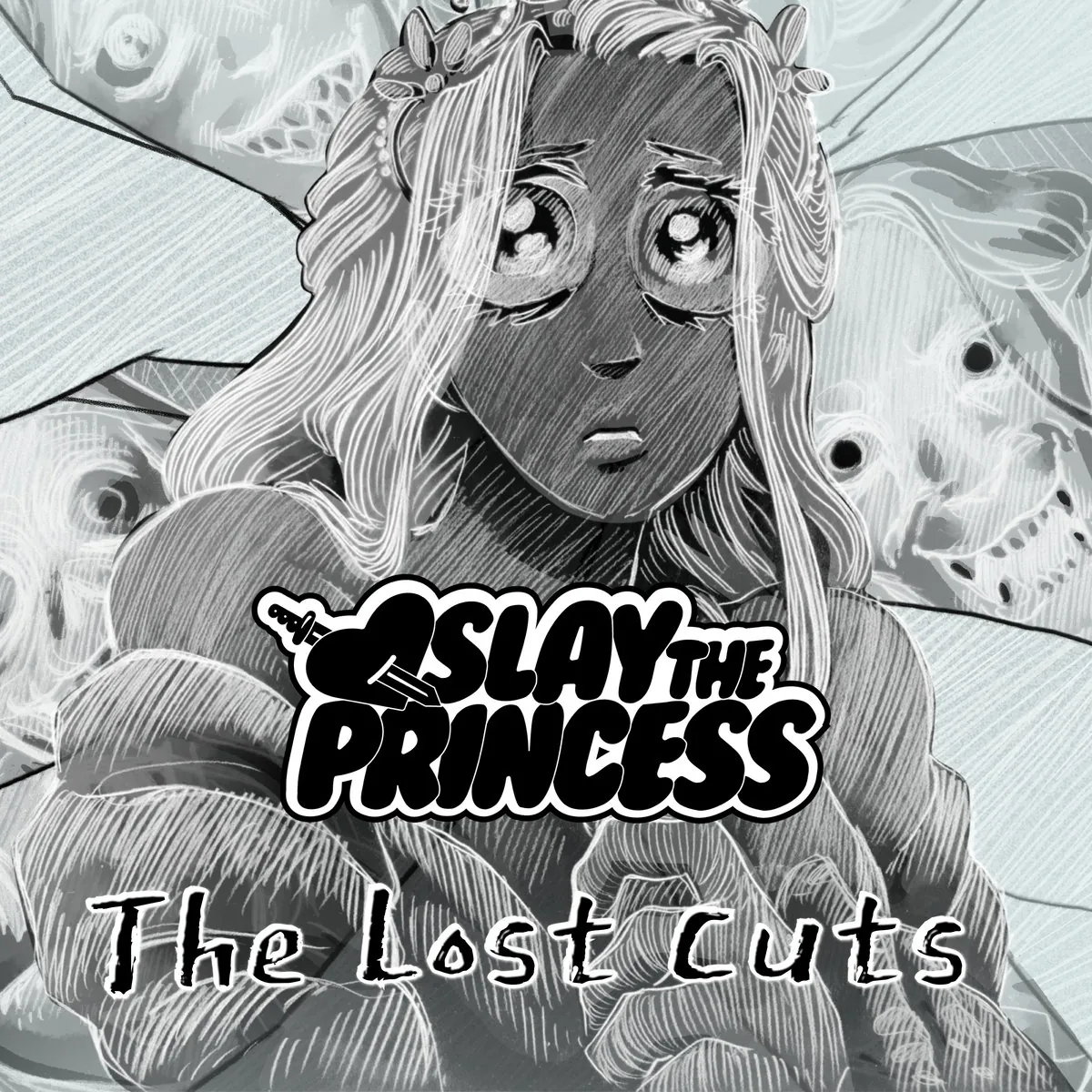Unused and early concept tracks from Slay the Princess? Don’t mind if I do!
Seriously though. It is rare for a composer to pull back the curtain and share what didn’t make it past the cutting room floor with listeners. If there’s any game where I appreciate the endeavor of documenting the draft, in-process, and rejected tunes, it has to be Slay the Princess. Aesthetically alone, it fits extremely well. Abby Howard’s sketch art leads me to imagine notebooks upon notebooks of tossed concept art that we may never see. The Lost Cuts serves as composer Brandon Boone‘s musical equivalent to the scrapped notebooks. Across two hours, there is a lot to learn about and plenty more to enjoy!
The team ultimately cut some of the most melodic and tonal pieces, either because they deviated too far from the “Princess” main theme or they would have served as too big a distraction over the game’s fully voiced narrative. I noticed this in the stirring strings of “Another Witch Concept,” the bright piano of “Original Spectre,” and the pulsing rock band rendition of “Original Apotheosis Speed.”
Elsewhere, there are some bizarre machinations that one could imagine trying to put into Slay the Princess but ultimately rejecting. As I discussed in my interview with Boone (Rhythm Encounter Ep. 151), “The Nightmare 6/8” had some potential, but it flies in the face of the repeated voice acting “heart. lung. liver. nerves.” You just need something in 4 to move along with that. Other fun experimental tracks include “Damsel was going to have record scratches” and “Damsel Vinyl Idea.” Here we have Boone layering on the artifacts of the revered analog format, including microtonal shifts and warping from playback of an old record, and the aforementioned scratching sound.
This Lost Cuts compilation includes music cut from the original game and The Pristine Cut expansion. This means we have some interesting “Happily Ever After” and “Dragon/Princess” concept tracks to check out. I loved the descending/missing half piano lines on “The Princess and The Dragon Reverse Concept.” I could have seen that going somewhere, though I prefer the final product (including Amelia Jones humming) to this cut version.
“Lights Go Out Concept” and “Plastic Happily Ever After” are my favorite pieces from the “Happily Ever After” portion. I can clearly identify how these tracks may have worked in this beloved additional chapter.
The album ends with a trailer piece (“Waltz Trailer”) and a collection of Amelia Jones trying out a variety of melodic and harmonic strains, with no instrumental accompaniment, simply titled “Amelia Vocalization.” I love hearing Amelia’s voice separated from the music. Yes, it sounds lovely, but it’s clear it needs something else. That’s when I wind back to “The Shifting Mound Mock Up” and hear ideas for this pivotal theme with synthesized choir and no Amelia. This lengthy Mock Up has some great ideas built into it, but without Amelia’s voice, it isn’t all there. Put Shifting Mound and Amelia Vocalization together (with the expertise of someone like Brandon Boone) and you have everything you need for an epic, five-part musical theme.
Granted, as much as I enjoyed listening to this album, it’s not as enjoyable as listening to something as sublime as the Slay the Princess Live recordings. However, while most of the Slay the Princess music is for sale on Steam as part of the Founders Pack DLC, Slay the Princess: The Lost Cuts is only available directly through the composer’s Bandcamp page. This is a unique opportunity to support the composer, and it’s a nice capstone for anyone who wants a complete Slay the Princess sound collection!

